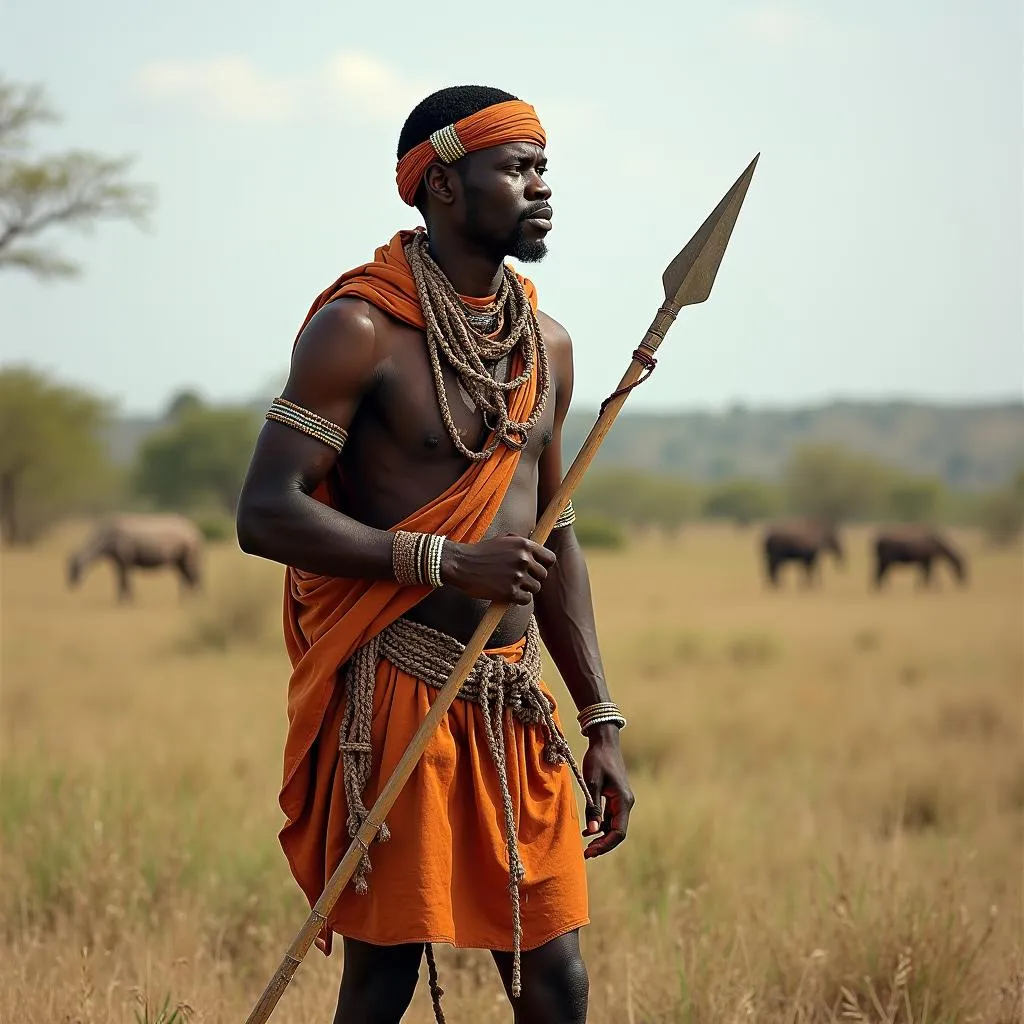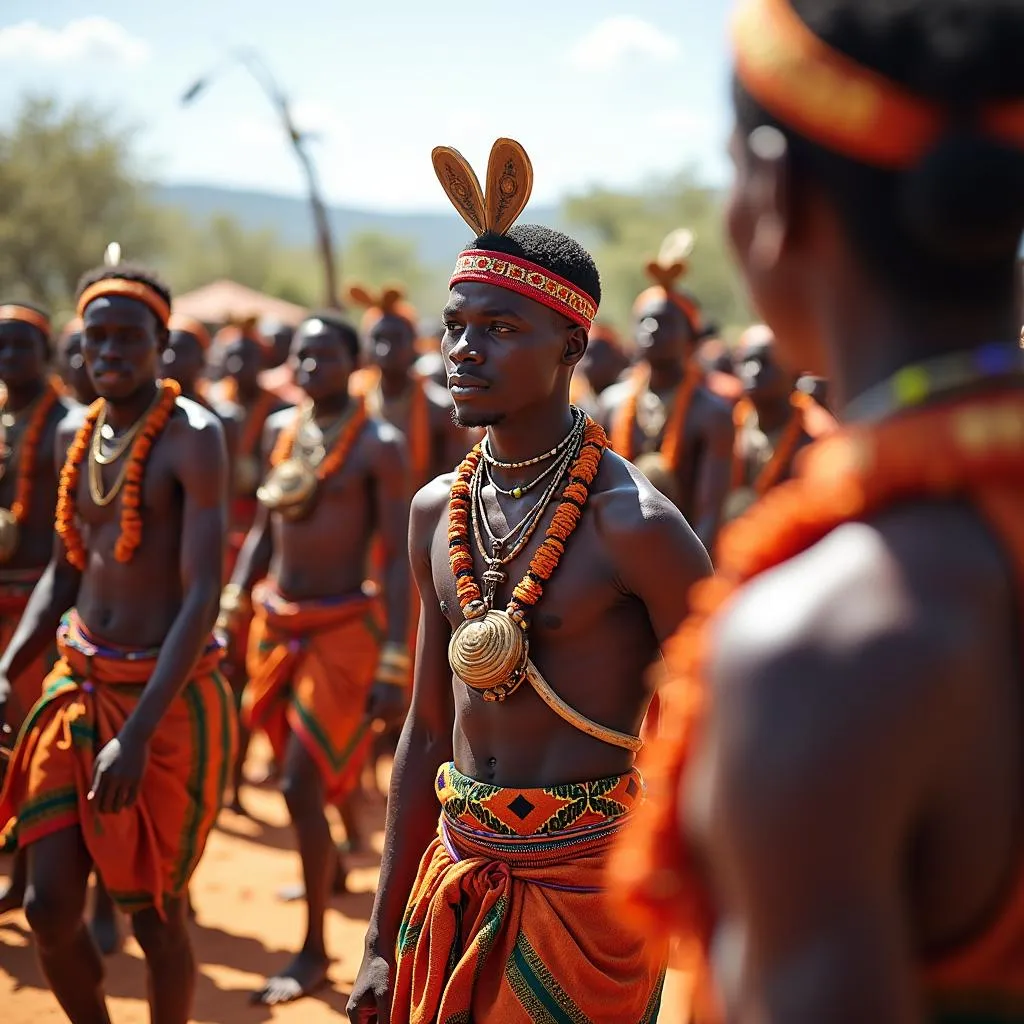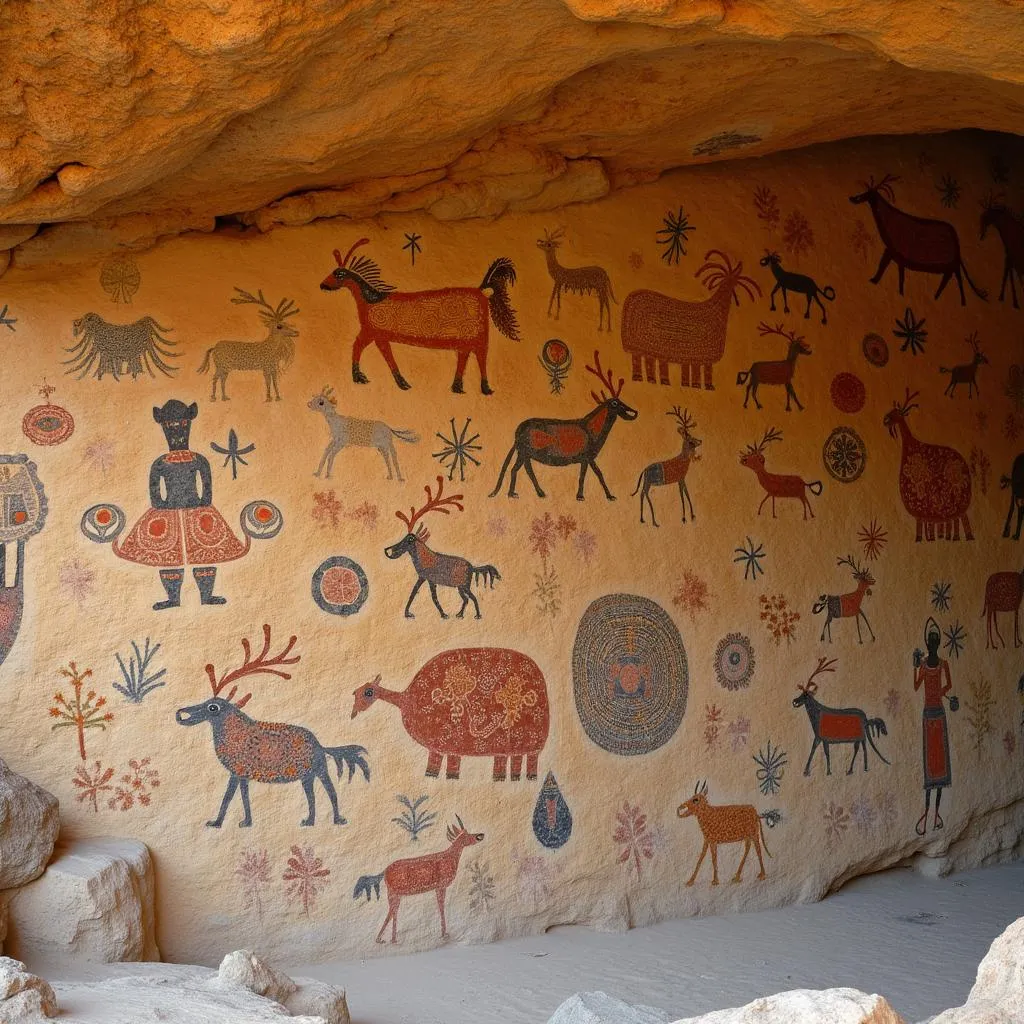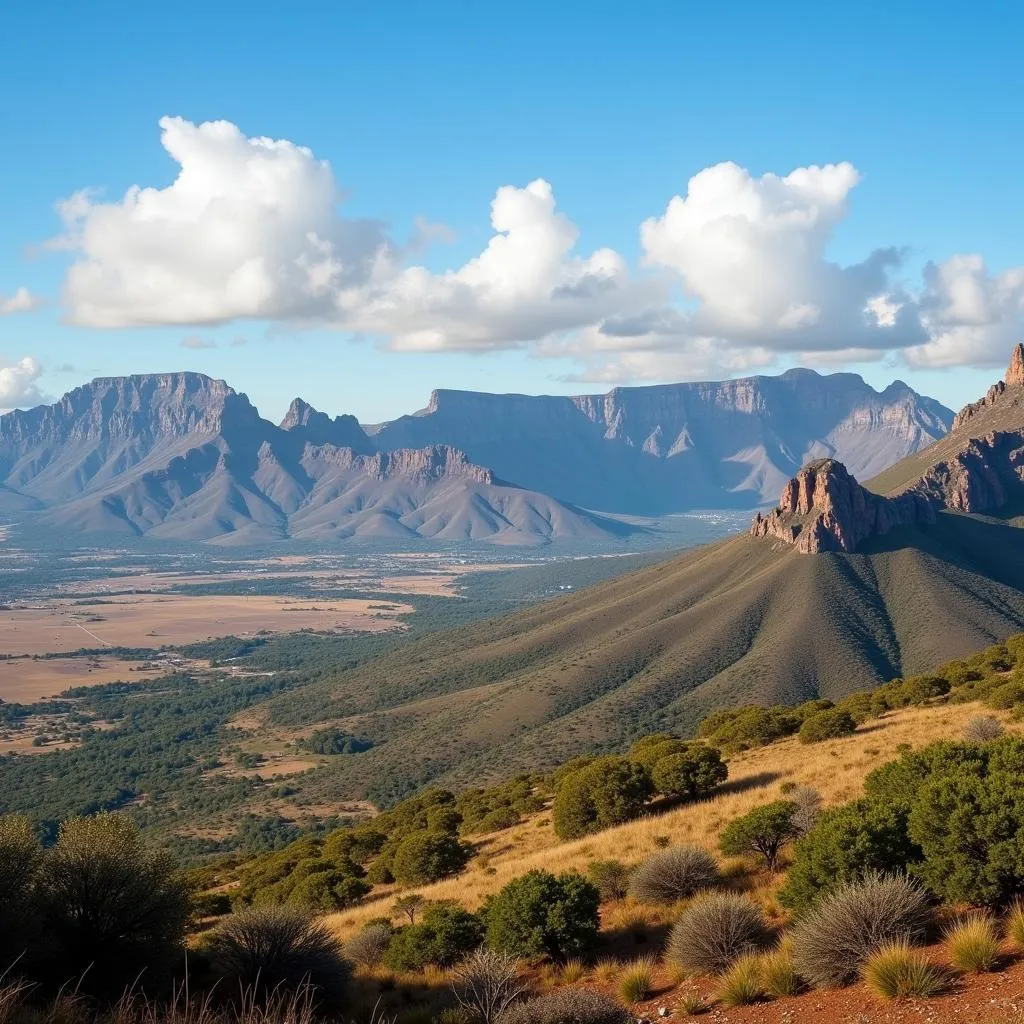Unveiling the Enigma: A Journey into the World of the African Bushmen
The African Bushmen, also known as the San people, are renowned for their ancient lineage and profound connection with nature. Living in harmony with the harsh terrains of Southern Africa for millennia, these indigenous communities hold a captivating allure for those seeking to understand a way of life seemingly untouched by time.
 African Bushman hunter-gatherer
African Bushman hunter-gatherer
The Ancient Roots of the Bushmen
Archaeological evidence suggests that the San people have inhabited Southern Africa for over 60,000 years, making them one of the oldest cultures on Earth. Their history predates the arrival of Bantu-speaking groups and European colonists, offering a glimpse into a time when humanity lived in complete dependence on the natural world. The Bushmen’s ancestral lands span across several countries, including Botswana, Namibia, South Africa, and Angola.
Masters of Survival: Adaptations to Arid Environments
Life in the Kalahari Desert, the primary home of many Bushmen groups, demands remarkable resilience and ingenuity. These hunter-gatherer societies have developed exceptional survival skills, adapting to the extreme temperatures, limited water sources, and diverse wildlife of their environment.
Their knowledge of the land is unparalleled. The Bushmen can identify and utilize a vast array of plants for sustenance, medicine, and even crafting tools. They possess an innate understanding of animal behavior, employing sophisticated hunting techniques using bows and arrows, spears, and traps.
 African Bushman community celebration
African Bushman community celebration
A Rich Cultural Tapestry: Language, Art, and Spirituality
Despite facing numerous challenges, the San people have maintained a rich cultural heritage expressed through their unique languages, intricate art forms, and profound spiritual beliefs.
The Clicking Symphony of Bushman Languages
The Bushmen languages, belonging to the Khoisan family, are instantly recognizable for their distinctive click consonants, produced by using the tongue against the teeth and palate. These languages, with their complex phonetic structures, are a testament to the ancient origins and cultural distinctiveness of the San people.
Ancient Echoes: Rock Art as Cultural Narratives
The African Bushmen are renowned for their remarkable rock art, found throughout Southern Africa. These ancient paintings and engravings, often depicting hunting scenes, animals, and spiritual figures, provide invaluable insights into the beliefs, rituals, and daily life of past generations. The artistry and symbolism within these rock art masterpieces continue to captivate researchers and art enthusiasts alike.
 African Bushman rock art
African Bushman rock art
Facing the Future: Challenges and Resilience
Despite their enduring connection to their traditions, the San people face growing challenges in the modern world. Land dispossession, assimilation policies, and the impacts of climate change pose significant threats to their way of life.
However, the Bushmen are known for their resilience and adaptability. Many communities are actively working to preserve their cultural heritage while seeking new opportunities for education, healthcare, and economic development.
Conclusion
The African Bushmen, with their ancient roots and profound connection to nature, offer a unique perspective on human resilience and cultural diversity. Understanding their history, traditions, and the challenges they face is crucial for appreciating the value of indigenous knowledge and promoting a more sustainable future for all. If you ever find yourself venturing into the heart of Southern Africa, remember the stories of the San people, the original inhabitants of this vast and awe-inspiring land. Their legacy serves as a reminder of our shared human story and the enduring power of cultural heritage.
FAQs
What is the significance of the click consonants in Bushman languages?
The click consonants are a defining characteristic of the Khoisan language family, spoken by the San people and other indigenous groups in Southern Africa. These sounds are not found in most other language families, highlighting the unique linguistic heritage of the Bushmen.
How do the Bushmen adapt to the harsh conditions of the Kalahari Desert?
The Bushmen possess a deep understanding of their environment, enabling them to locate water sources, identify edible plants, and hunt animals using traditional methods. Their knowledge of the desert ecosystem is crucial for their survival in this challenging terrain.
What threats do the Bushmen face in the modern world?
Modern challenges include land dispossession, forced assimilation policies, and the impacts of climate change. These factors threaten their traditional way of life and cultural heritage.
How can we support the preservation of Bushman culture?
Supporting organizations working to protect indigenous land rights, promote cultural awareness, and empower Bushman communities can contribute to their well-being and the preservation of their unique heritage.
Where can I learn more about the African Bushmen?
Numerous resources, including books, documentaries, and academic articles, provide valuable insights into the history, culture, and current situation of the African Bushmen. Seeking out these resources can deepen your understanding and appreciation for these remarkable people.
For any assistance, please contact us at:
Phone Number: +255768904061
Email: kaka.mag@gmail.com
Or visit us at: Mbarali DC Mawindi, Kangaga, Tanzania.
We have a 24/7 customer service team.

